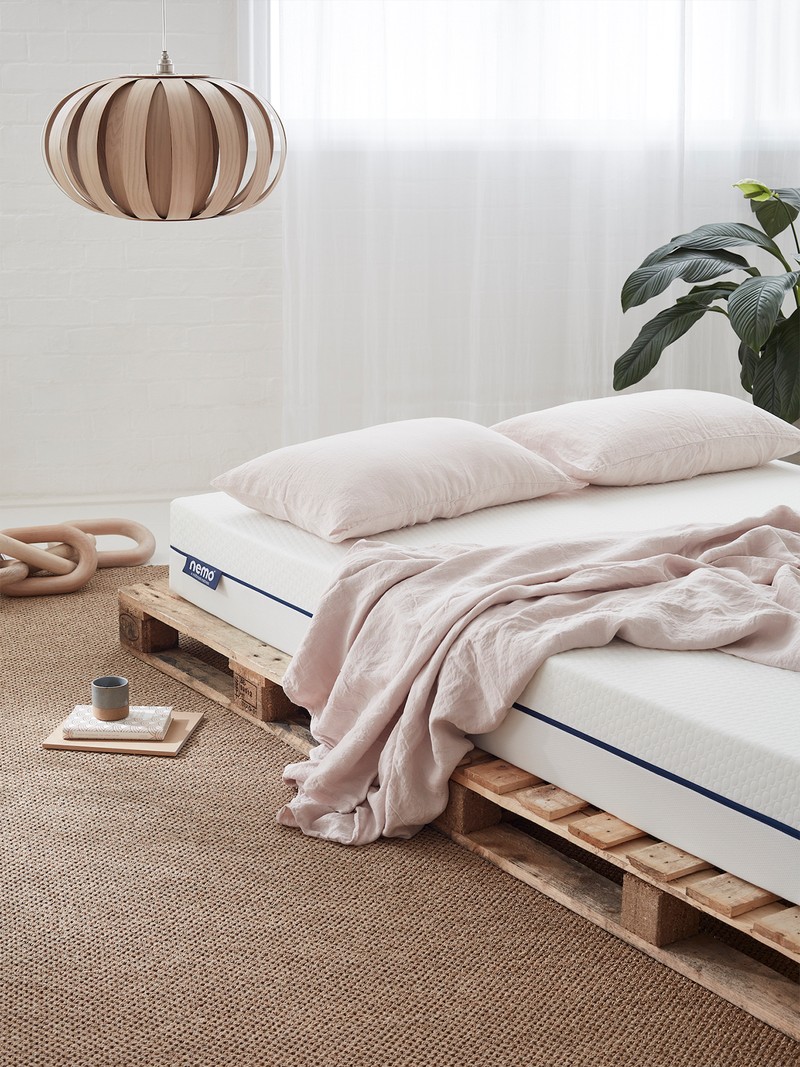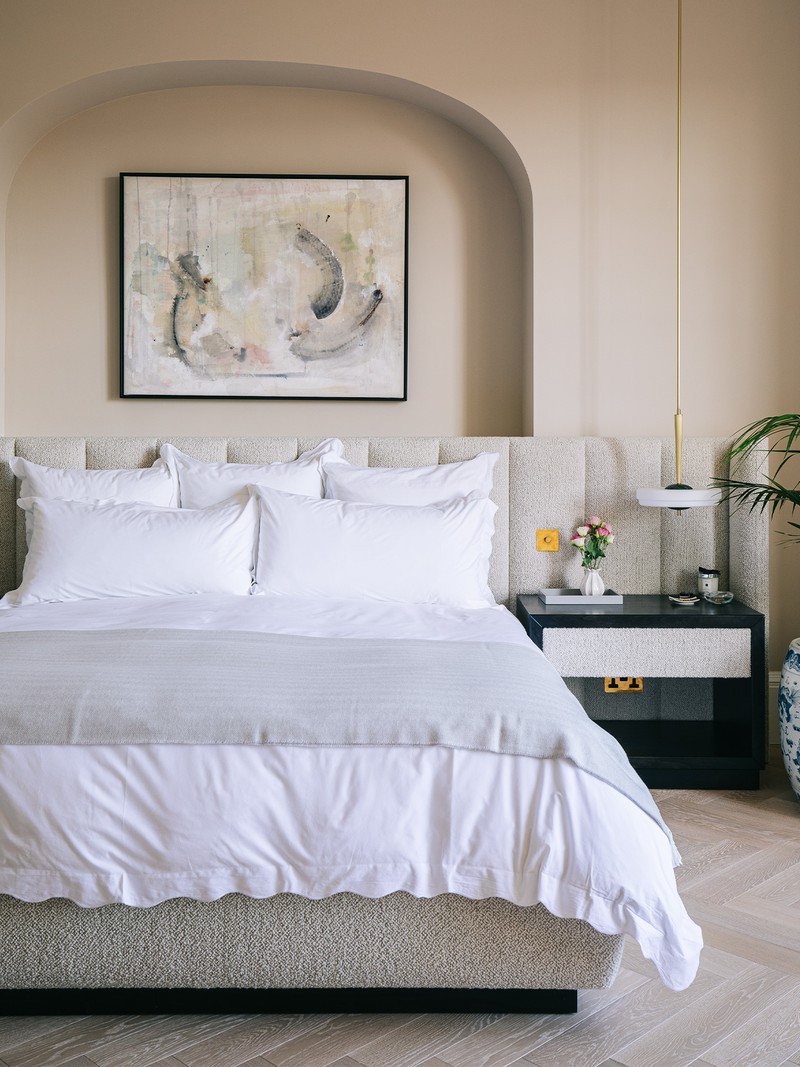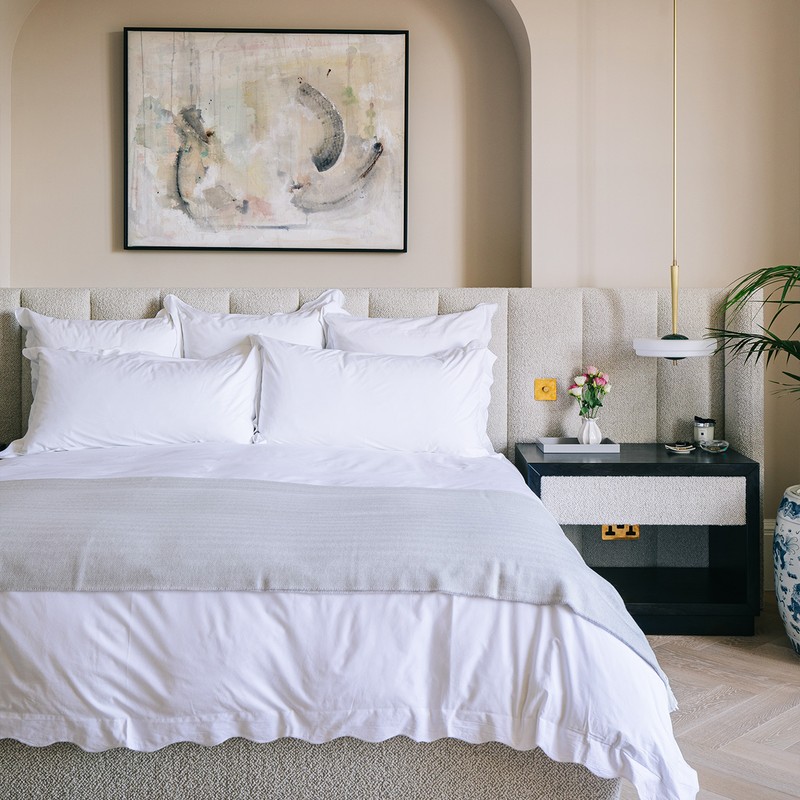A Buyer’s Guide To Finding & Owning A Mattress

First Off, Tell Us About The Different Types Of Mattresses…
“Mattresses can vary widely. They can be made with any combination of foam, latex, silk, cashmere, as well as natural materials such as cotton, bamboo and wool. Some have spring coil systems and others don’t. We, for instance, manufacture primarily with natural fillings and fabrics, alongside pocket sprung cores, but also innovate to find eco-friendly fillings which can help reduce the plastic crisis.” – Ross Thurston from The Millbrook Bed Company
“Open spring mattresses are more affordable, due to their construction, the type of spring and filling content. Pocket spring mattresses last longer and minimise the risk of you rolling towards your partner – the springs work independently to respond to individual bodyweight, so they're very hardwearing. Foam and memory foam are good for anyone with allergies. The best memory foam mattresses mould to your body shape and help to align your spine, while also being made from synthetic materials with anti-microbial properties.” – Rebecca Sutton, Mattresss Buyer for John Lewis
Is There A ‘right’ Amount To Spend On A Mattress On Average?
“Expect to spend £1,000-£2,500 on a king-size mattress. A good one in this price bracket will last a good ten years on average, so think of it as cost per sleep. Remember, you’ll remember the quality long after you forget the price.” – Emma Deterding, Kelling Design
How Can You Tell If You’re Suited To A Hard Or Soft Mattress?
“Mattress firmness is a very personal thing and it’s hard to offer one rule. Generally, side sleepers benefit from a softer mattress to help align the body and support the shoulders and hips. Back sleepers, or those with back issues, could benefit from a firmer mattress with more specialist support. It’s a myth that softer mattresses are lower quality and don’t offer enough support. Indeed, many people will benefit from a mattress which has a softer top to support the curve of their lumbar spine. It’s ultimately about personal preference.” – Ross
“The correct level of support is fundamental to ensuring that your spine is in a natural position. To achieve this, you must sink into the bed to some extent, or your spine will curve unnaturally, and this may affect your posture. If you lie on your side, your hips and shoulders need to sink in to make sure you get enough support around the waist level. If you lie on your back, your body must sink in sufficiently to ensure your lower back is well supported. We offer a split-tension mattress option, custom-made to your preferences, so both you and your partner can have a totally different support in the same bed.”– Alistair Hughes, MD Of Savoir Beds
Is There A Specific Way To Measure Mattress Firmness?
“Spring tensions are usually described as soft, medium or firm, which gives buyers a suggestion of how the mattress will feel to lie on. But it’s worth remembering these three tensions are directly linked to your body weight and the size of the chosen mattress. Soft is suited to body weights up to 8 stone (50kg); medium is suited to 8-16 stone (50-100kg); finally, firm is optimum for bodyweights over 16 stone (100kg+).” – Rebecca
“The individual materials will determine the firmness of each mattress, and this will vary from brand to brand. The terminology will also vary, so it’s vital you do your own test to determine what’s comfortable and supportive to you. Tensions may be determined by the thickness of wire for the mattress springs or the number of turns, or even the number of natural materials within the box spring and mattress. We ca create a bespoke tension, if required, but we always suggest trying a mattress out for yourself.” – Alistair
/https%3A%2F%2Fsw18.sheerluxe.com%2Fsites%2Fsheerluxe%2Ffiles%2Farticles%2F2022%2F03%2Fsmoothtech-crescent-3000-millbrook-bed-company-l-1.jpg?itok=YKbxrT_2)
Is There Such A Thing As The 'Healthiest' Mattress?
“When it comes to choosing mattress materials, natural is generally best. Synthetic fibres, latex and memory foams can cause overheating and they deteriorate over time, whereas natural fibres such as wool and horse tail offer longer-lasting comfort and support. They also wick moisture away and help to regulate body temperature all year round.” – Alistair
“Natural materials are always going to offer the best sleep, which is why we use wool and cotton. However, allergies may be triggered by wool and therefore it won’t suit everyone. A mattress which is hypoallergenic can also offer an alternative to memory foam.” – Ross
In The Same Vein, What’s The Most Environmentally Friendly Mattress Filling?
“Without a doubt it’s wool. Wool is the ultimate renewable material; it is generated naturally by sheep and biodegrades at the end of its useful life. It leaves very little carbon footprint behind and it’s naturally temperature regulating as well, so it’s ideal as a mattress topper. Other mattresses these days are created using materials which would otherwise sit in landfill, like recycled viscose and performance polyester fillings reborn from plastic bottles, so that’s also a more sustainable option.” – Ross
Moving Onto Care Tips, How Often Should You Turn A Mattress?
“Traditionally a mattress would initially be flipped after two weeks of use, and then rotated two weeks later. It should then be flipped or rotated monthly. If both sides of the mattress are giving the same support, it is good to ensure sides are swapped regularly. If each side is different, e.g. the left is soft and right is firm, you will want to ensure that each sleeper keeps their side. Make sure you never bend your mattress when turning it.” – Alistair
“Every mattress is different and so you’ll need to check the manufacturer’s instructions. As all of our mattresses feature high-quality sleep surfaces, many with natural wool toppers, we recommend a rotate but not a flip, as then you lose the right sleep surface. Following the right guidance is so important to prolong the life of your mattress.” – Ross
How Can You Protect A Mattress To Ensure It Lasts?
“Prevention is always better than cure and we recommend a good protector to keep the sleep surface clean and sanitary. If you have a natural fibre mattress, a natural fibre protector is the perfect partner. Not only does a protector minimise the risk of stains, but it can be washed easily. We also recommend that mattresses made from natural fibres should be brushed rather than vacuumed as this can damage the filling and affect the sleep surface.” – Ross
How Often Should A Mattress Be Replaced?
Typically, a mattress should be replaced every seven to ten years, but the exact number will vary depending on the type of mattress you have. There are a few easy tell-tale signs your mattress has come to the end of its life. Look for deep sagging in the mattress – can you see a dip in the position where you usually lie? This is a sign the top sleep layers aren’t recovering or that the coils or fabric support layer are weakening. Do you wake up with back pain you didn’t notice before, or realise you had a better night’s sleep after a night away? A night in a different bed can be a good wake-up call. Perhaps the most obvious sign that you need a new mattress is if you start to hear or see coils through the sleep surface.” – Ross
Finally, How Should You Dispose Of An Old Mattress?
“If you find your mattress is uncomfortable for you but has plenty of life left in it, consider selling it or donating it. So many mattresses end up in landfill and it could be the perfect solution for someone else. Most mattress manufacturers and retailers will offer a recycling service but it’s worth looking into how this works, as so many mattresses end up going to waste.” – Ross

For more information and advice, visit Millbrook-Beds.co.uk, SavoirBeds.com, JohnLewis.com & KellingDesigns.com.
DISCLAIMER: We endeavour to always credit the correct original source of every image we use. If you think a credit may be incorrect, please contact us at info@sheerluxe.com.


